Even though the 2017 free-agent class is one of the weaker groups in recent memory, Major League Baseball has experienced a busy offseason filled with blockbuster trades, including the Chris Sale deal to the Red Sox, the Adam Eaton deal to the Nationals and the Brian McCann deal to the Astros.
There were also a slew of significant free-agent signings, including Edwin Encarnacion joining the Indians, Yoenis Cespedes re-upping with the Mets and Ian Desmond surprisingly landing in Colorado to play, of all positions, first base.
All of these transactions, along with the continued development of young players and the expected emergence of a new rookie class, means the balance of power, as usual, is changing in both the American and National Leagues.
Here are my power rankings and a brief breakdown of where all 30 teams stand to start the new year, with the good and the bad for each.

1. Chicago Cubs
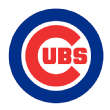 What’s good: Everything! The Cubs have the best team in baseball on paper even after the free-agent departures of Dexter Fowler and Aroldis Chapman. The Cubs should get a boost in ’17 with the return of Kyle Schwarber and the continued development of Javier Baez and Willson Contreras. They also acquired Wade Davis, who should be a solid replacement for Chapman if he can stay healthy and pitch to his potential.
What’s good: Everything! The Cubs have the best team in baseball on paper even after the free-agent departures of Dexter Fowler and Aroldis Chapman. The Cubs should get a boost in ’17 with the return of Kyle Schwarber and the continued development of Javier Baez and Willson Contreras. They also acquired Wade Davis, who should be a solid replacement for Chapman if he can stay healthy and pitch to his potential.
What’s bad: Fowler's departure leaves a huge hole in the leadoff spot in their lineup. The Cubs will hope Ben Zobrist and his high on-base percentage will fill the void despite his lack of speed.
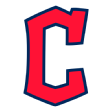 What’s good: The defending American League Champions should have an even better team in ’17, thanks to the signing of Encarnacion, who has belted at least 34 home runs per season for five consecutive years. Even more important, Michael Brantley, Carlos Carrasco and Danny Salazar will return from injuries. The Indians have the best starting rotation and bullpen in the AL Central and are clearly the team to beat.
What’s good: The defending American League Champions should have an even better team in ’17, thanks to the signing of Encarnacion, who has belted at least 34 home runs per season for five consecutive years. Even more important, Michael Brantley, Carlos Carrasco and Danny Salazar will return from injuries. The Indians have the best starting rotation and bullpen in the AL Central and are clearly the team to beat.
What’s bad: Nothing is bad, but Cleveland will focus on monitoring the health, performance and comeback abilities of Carrasco, Salazar and Brantley in spring training.
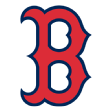 What’s good: The Red Sox picked up another ace when they acquired Sale from the Chicago White Sox at the winter meetings. Sale will join Cy Young Award winner Rick Porcello and former Cy Young Award Winner David Price in the starting rotation. The Red Sox also improved their setup reliever role by acquiring Tyler Thornburg from the Brewers. Mitch Moreland should help the Red Sox defensively at first base when he plays there.
What’s good: The Red Sox picked up another ace when they acquired Sale from the Chicago White Sox at the winter meetings. Sale will join Cy Young Award winner Rick Porcello and former Cy Young Award Winner David Price in the starting rotation. The Red Sox also improved their setup reliever role by acquiring Tyler Thornburg from the Brewers. Mitch Moreland should help the Red Sox defensively at first base when he plays there.
What’s bad: Life after David Ortiz starts now, and they’re going to miss his impact bat more than they think. To overcome it, they’ll need Xander Bogaerts to take his bat to the next level and Andrew Benintendi to become a force in left field. The Sox will hope for a comeback from Pablo Sandoval and will have an interesting battle at catcher among Sandy Leon, Blake Swihart and Christian Vazquez.
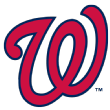 What’s good: The Nationals will get a full-year from Trea Turner, who has been compared to Rickey Henderson offensively and was their best position player last year. With Turner and Adam Eaton, whom they acquired from the White Sox, the Nats should have two of the best table setters in the league. The Nationals should get a huge bounceback year from the newly married Bryce Harper, who, after a down year, should return to being an MVP candidate.
What’s good: The Nationals will get a full-year from Trea Turner, who has been compared to Rickey Henderson offensively and was their best position player last year. With Turner and Adam Eaton, whom they acquired from the White Sox, the Nats should have two of the best table setters in the league. The Nationals should get a huge bounceback year from the newly married Bryce Harper, who, after a down year, should return to being an MVP candidate.
What’s bad: They lost their closer, Mark Melancon, and he will not be easy to replace unless they can sign free agent Greg Holland or trade for a David Robertson or Alex Colome. The Nationals have a lot of power arms in the back end of their pen, but unless someone unexpectedly steps up they’ll need a closer to hold off the Mets and repeat as NL East Champions. The age and possible decline of both Jayson Werth and Ryan Zimmerman will need to be monitored closely at the start of the year.
 What’s good: The Mets will have their starting rotation back and intact with Noah Syndergaard, Matt Harvey, Jacob deGrom, Steven Matz and Robert Gsellman. Syndergaard started 30 games for the Mets, and the rest of the rotation is expected to be healthy and ready for bounceback seasons. The Mets were able to re-sign Yoenis Cespedes, retain Neil Walker and will get a full-year from Jose Reyes.
What’s good: The Mets will have their starting rotation back and intact with Noah Syndergaard, Matt Harvey, Jacob deGrom, Steven Matz and Robert Gsellman. Syndergaard started 30 games for the Mets, and the rest of the rotation is expected to be healthy and ready for bounceback seasons. The Mets were able to re-sign Yoenis Cespedes, retain Neil Walker and will get a full-year from Jose Reyes.
What’s bad: They’re waiting to see if Jeurys Familia will be suspended by Major League Baseball, and if so, they would have to find a way to finish games without him. The Mets are trying to trade either Jay Bruce or Curtis Granderson and would love to land a better all-around center fielder than Juan Lagares. Other concerns include David Wright’s back, Travis d’Arnaud's health and the uncertainty of which Lucas Duda will show up next season.
 What’s good: The Dodgers were able to re-sign all three of their top free agents in Rich Hill, Kenley Jansen and Justin Turner. The Dodgers expect to have a full, healthy season from Clayton Kershaw, who once again will be the Cy Young Award favorite, and they are expecting big things from Julio Urias, whose innings limit will be increased in his second season. The continued development of Joc Pederson, Yasmani Grandal, Yasiel Puig and Corey Seager will also be the key to their offensive success.
What’s good: The Dodgers were able to re-sign all three of their top free agents in Rich Hill, Kenley Jansen and Justin Turner. The Dodgers expect to have a full, healthy season from Clayton Kershaw, who once again will be the Cy Young Award favorite, and they are expecting big things from Julio Urias, whose innings limit will be increased in his second season. The continued development of Joc Pederson, Yasmani Grandal, Yasiel Puig and Corey Seager will also be the key to their offensive success.
What’s bad: The Dodgers need another impact right-handed hitter for their lineup and need to improve at second base. Brian Dozier of the Twins or Ian Kinsler of the Tigers are two trade targets who would fill both holes with one move.
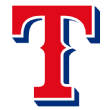 What’s good: The Rangers still have the division's best one-two punch at the top of their rotation in Yu Darvish and Cole Hamels and are led by future Hall of Famer Adrian Beltre, who is still playing at a high level. Second baseman Rougned Odor is developing so fast that he’s being mentioned with the game's best second basemen, such as Jose Altuve, Robinson Cano and Dustin Pedroia.
What’s good: The Rangers still have the division's best one-two punch at the top of their rotation in Yu Darvish and Cole Hamels and are led by future Hall of Famer Adrian Beltre, who is still playing at a high level. Second baseman Rougned Odor is developing so fast that he’s being mentioned with the game's best second basemen, such as Jose Altuve, Robinson Cano and Dustin Pedroia.
What’s bad: The Rangers have questions at first base and designated hitter, where Joey Gallo, Jurickson Profar and Ryan Rua will compete for playing time. The back of the Rangers' starting rotation is still a question mark, and many wondered about the team's $10 million dollar investment in Andrew Cashner. They need a strong comeback season from Shin-Soo Choo and could use one more proven power bat, which they’re trying to get by hopefully signing Mike Napoli.
 What’s good: The Giants were able to fill their most critical off-season need by signing closer Mark Melancon. They have the best battery in baseball in Madison Bumgarner and Buster Posey and are a special defensive team up the middle, thanks to the Gold Glove double-play combination of Brandon Crawford at shortstop and Joe Panik at second base. They have one of the game's best managers in Bruce Bochy, a future Hall of Famer who is a real difference-maker in the way he runs a game.
What’s good: The Giants were able to fill their most critical off-season need by signing closer Mark Melancon. They have the best battery in baseball in Madison Bumgarner and Buster Posey and are a special defensive team up the middle, thanks to the Gold Glove double-play combination of Brandon Crawford at shortstop and Joe Panik at second base. They have one of the game's best managers in Bruce Bochy, a future Hall of Famer who is a real difference-maker in the way he runs a game.
What’s bad: The Giants' setup relievers are the weakest they’ve had in years, and they still have a big hole in left field that they hope will be filled by Mac Williamson and Jarrett Parker. The farm system is not deep, and that could cost them at the trade deadline.
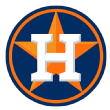 What’s good: The Astros have had a busy offseason and really improved the quality and depth of the position players with the free-agent signings of Carlos Beltran and Josh Reddick and the trade for Brian McCann. The Astros have a strong core of developing impact players in Jose Altuve, Carlos Correa, George Springer and Alex Bregman.
What’s good: The Astros have had a busy offseason and really improved the quality and depth of the position players with the free-agent signings of Carlos Beltran and Josh Reddick and the trade for Brian McCann. The Astros have a strong core of developing impact players in Jose Altuve, Carlos Correa, George Springer and Alex Bregman.
What’s bad: The Astros are hoping their two best starting pitchers, Dallas Keuchel and Lance McCullers Jr., can stay healthy and have comeback seasons. Then, the Astros can only hope the rest of their rotation is good enough to get them back to October. They desperately need one more top-of-the-rotation-type starter and are hoping they can land either Jose Quintana from the White Sox or one of the Rays' top starters, whom Tampa is presently dangling.
10. Colorado Rockies
 What’s good: The Rockies' signing of Ian Desmond to play first base was the biggest shocker of the offseason, and you could argue it gives the Rockies the second-best lineup in the National League, on offense and defense, behind the Chicago Cubs. The Rockies have the league's best all-around third baseman in MVP candidate Nolan Arenado, and he's surrounded by an average or above-average player at every position except catcher. The growth and emergence of a young, strong starting rotation led by Jon Gray, Tyler Chatwood and Chad Bettis makes the Rockies the prime team to have a breakout season in 2017.
What’s good: The Rockies' signing of Ian Desmond to play first base was the biggest shocker of the offseason, and you could argue it gives the Rockies the second-best lineup in the National League, on offense and defense, behind the Chicago Cubs. The Rockies have the league's best all-around third baseman in MVP candidate Nolan Arenado, and he's surrounded by an average or above-average player at every position except catcher. The growth and emergence of a young, strong starting rotation led by Jon Gray, Tyler Chatwood and Chad Bettis makes the Rockies the prime team to have a breakout season in 2017.
What’s bad: The Rockies could use an upgrade at catcher and more depth for their bullpen and starting rotation.
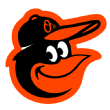 What’s good: The Orioles have two young starters in Kevin Gausman and Dylan Bundy who continue to develop and improve. If they can take their game to the next level along with Chris Tillman, it should give the Orioles a formidable rotation, one that is much better than most people think. The O’s have a great bullpen led by the game's best closer, Zach Britton. The O’s have great power and strong defense at several positions.
What’s good: The Orioles have two young starters in Kevin Gausman and Dylan Bundy who continue to develop and improve. If they can take their game to the next level along with Chris Tillman, it should give the Orioles a formidable rotation, one that is much better than most people think. The O’s have a great bullpen led by the game's best closer, Zach Britton. The O’s have great power and strong defense at several positions.
What’s bad: The Orioles still need to solve their corner outfield and designated-hitter positions. They need to improve their team on-base percentage and either re-sign Mark Trumbo or replace him with another power bat such as Napoli or Chris Carter.
 What’s good: The Cardinals were able to solve their issues at center field and the lead-off spot by signing free agent Dexter Fowler. They also replaced the injured Zach Duke with another left-handed reliever when they inked Brett Cecil in free agency. The Cardinals have built infield and outfield depth and have been able to get younger the last couple of years, getting solid contributions from players such as outfielder Stephen Piscotty and shortstop Aledmys Diaz.
What’s good: The Cardinals were able to solve their issues at center field and the lead-off spot by signing free agent Dexter Fowler. They also replaced the injured Zach Duke with another left-handed reliever when they inked Brett Cecil in free agency. The Cardinals have built infield and outfield depth and have been able to get younger the last couple of years, getting solid contributions from players such as outfielder Stephen Piscotty and shortstop Aledmys Diaz.
What’s bad: The Cardinals have a lot of concerns in the starting rotation, including the possible decline of Adam Wainwright and the injury history of Michael Wacha, who has had trouble with his right shoulder. Other concerns surround the age and possible declines of Yadier Molina and Jhonny Peralta, who are both 34. The Cardinals also need another middle-of-the-order-type impact bat, which could come at either first, second or third base, thanks to a flexible roster of players who can play multiple positions, such as Matt Carpenter, their best hitter.
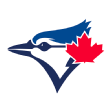 What’s good: The Blue Jays have one of the best starting rotations in the league, led by Aaron Sanchez, Marcus Stroman, J.A. Happ and Marco Estrada. They were able to sign designated hitter Kendrys Morales at a club-friendly three-year, $33 million dollar deal. Their defense is special at several positions, including MVP candidate Josh Donaldson at third base, Kevin Pillar in center field and Russell Martin behind the plate.
What’s good: The Blue Jays have one of the best starting rotations in the league, led by Aaron Sanchez, Marcus Stroman, J.A. Happ and Marco Estrada. They were able to sign designated hitter Kendrys Morales at a club-friendly three-year, $33 million dollar deal. Their defense is special at several positions, including MVP candidate Josh Donaldson at third base, Kevin Pillar in center field and Russell Martin behind the plate.
What’s bad: The Blue Jays will sorely miss Edwin Encarnacion and Jose Bautista, who is still a free agent. Both were integral parts of getting the Blue Jays to the ALCS in each of the past two seasons. The Jays' bullpen will miss Joaquin Benoit and Brett Cecil, and the lack of depth in the setup role is a concern.
14. Detroit Tigers
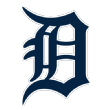 What’s good: The Tigers decided to keep their team intact after not liking the trade market and dangling many of their proven veteran players. They have one of the best offenses in baseball, led by Miguel Cabrera, J.D. Martinez, Victor Martinez and Justin Upton. The Tigers' rotation is better than people think: Justin Verlander should have won the Cy Young Award (it's amazing how Kate Upton and I are always on the same page), Michael Fulmer is the real deal, and Jordan Zimmermann is primed to have a bounceback season.
What’s good: The Tigers decided to keep their team intact after not liking the trade market and dangling many of their proven veteran players. They have one of the best offenses in baseball, led by Miguel Cabrera, J.D. Martinez, Victor Martinez and Justin Upton. The Tigers' rotation is better than people think: Justin Verlander should have won the Cy Young Award (it's amazing how Kate Upton and I are always on the same page), Michael Fulmer is the real deal, and Jordan Zimmermann is primed to have a bounceback season.
What’s bad: This is an aging team with an inflated payroll and a weak farm system, a trifecta that usually doesn’t come with a happy ending. If the Tigers aren’t in it in late July, then they could become the most interesting team at the trade deadline.
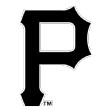 What’s good: The Pirates were able to sign Ivan Nova to an undervalued three-year deal and decided not to trade Andrew McCutchen to the Nationals despite a strong trade proposal by Washington. The Pirates have a strong young rotation with great upside, led by Gerrit Cole and Jameson Taillon. Their farm system is strong and deep, which bodes well for their future and ability to make trades.
What’s good: The Pirates were able to sign Ivan Nova to an undervalued three-year deal and decided not to trade Andrew McCutchen to the Nationals despite a strong trade proposal by Washington. The Pirates have a strong young rotation with great upside, led by Gerrit Cole and Jameson Taillon. Their farm system is strong and deep, which bodes well for their future and ability to make trades.
What’s bad: The Pirates need to deal with the legal problems that surround Jung Ho Kang and figure out a way to get more production from second baseman Josh Harrison.
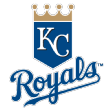 What’s good: The Royals still have most of their nucleus that helped them win a world championship just one year ago. Danny Duffy has developed into a top-of-rotation starter, and several of the Royals players who missed significant time last year because of injuries are all healthy heading into spring training, including Mike Moustakas, Lorenzo Cain and Alex Gordon.
What’s good: The Royals still have most of their nucleus that helped them win a world championship just one year ago. Danny Duffy has developed into a top-of-rotation starter, and several of the Royals players who missed significant time last year because of injuries are all healthy heading into spring training, including Mike Moustakas, Lorenzo Cain and Alex Gordon.
What’s bad: They traded away Wade Davis, their impact closer, to the Cubs and lost one of their most reliable middle-of-the-order bats in Morales, who signed with the Blue Jays as a free agent. They also still have six significant players who are on their free-agent years: Eric Hosmer, Alcides Escobar, Moustakas, Cain, Jarrod Dyson and Duffy. They either need to extend or trade a few of them, or risk setting the franchise back for years to come.
17. Miami Marlins
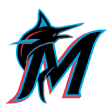 What’s good: The Marlins have been aggressive this offseason, landing starting pitcher Edinson Volquez and improving their bullpen with the free-agent additions of Brad Ziegler and Junichi Tazawa. The Marlins are hoping for huge comeback seasons from Giancarlo Stanton, who is their highest-paid player, and Dee Gordon, who served an 80-game suspension last year. The Marlins have the position players and bullpen to reach the postseason.
What’s good: The Marlins have been aggressive this offseason, landing starting pitcher Edinson Volquez and improving their bullpen with the free-agent additions of Brad Ziegler and Junichi Tazawa. The Marlins are hoping for huge comeback seasons from Giancarlo Stanton, who is their highest-paid player, and Dee Gordon, who served an 80-game suspension last year. The Marlins have the position players and bullpen to reach the postseason.
What’s bad: The Marlins are still dealing with the tragic death of one of the game's best pitchers, Jose Fernandez, who is not replaceable. The starting rotation does not come close to matching those of the Nationals or Mets, and the farm system still needs more quality and quantity to allow the front office to make more impactful trades.
18. Seattle Mariners
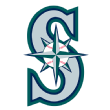 What’s good: The Mariners improved their team offensively at shortstop with the acquisition of Jean Segura from the Arizona Diamondbacks and are hoping that the group of Mitch Haniger, Dan Vogelbach and Ben Gamel will produce two everyday players. The Mariners' strength is the middle of their lineup, led by Robinson Cano, Nelson Cruz and Kyle Seager. Also, the Mariners finally found an impact closer in Edwin Diaz.
What’s good: The Mariners improved their team offensively at shortstop with the acquisition of Jean Segura from the Arizona Diamondbacks and are hoping that the group of Mitch Haniger, Dan Vogelbach and Ben Gamel will produce two everyday players. The Mariners' strength is the middle of their lineup, led by Robinson Cano, Nelson Cruz and Kyle Seager. Also, the Mariners finally found an impact closer in Edwin Diaz.
What’s bad: The starting rotation has as many question marks as it does answers. Felix Hernandez is still one of the game's best pitchers despite his declining stuff, but the injury histories of Hisashi Iwakuma and James Paxton are a concern, as is the departure of Taijuan Walker, who was dealt in the Segura trade. The Mariners should be able to go as far as their rotation takes them.
19. New York Yankees
 What’s good: The Yankees have done a great job in building one of the game's better farm systems. This bodes well for their future; they can develop prospects who will help them win, and they'll have players who will be able to trade to fill needs. Gary Sanchez emerged last year as their long-term future at catcher, breaking home run records in his first month in the big leagues. The Yankees' bullpen will once again be one of the game's best with Aroldis Chapman.
What’s good: The Yankees have done a great job in building one of the game's better farm systems. This bodes well for their future; they can develop prospects who will help them win, and they'll have players who will be able to trade to fill needs. Gary Sanchez emerged last year as their long-term future at catcher, breaking home run records in his first month in the big leagues. The Yankees' bullpen will once again be one of the game's best with Aroldis Chapman.
What’s bad: The Yankees need to improve their starting rotation, which has questions, beginning with Masahiro Tanaka, their best starter who has an out clause at the end of the season. The Yankees are hoping Michael Pineda can be more consistent, that Luis Severino can bounce back and be the pitcher they saw snapshots of in his rookie year, and that CC Sabathia has one year left of providing serviceable innings as they wait for James Kaprielian to develop. They are also hoping for the front office to trade for better starters.
20. Atlanta Braves
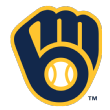 What’s good: The Braves are opening SunTrust Park, their new stadium, and have spent the last two years building an organization with the most pitching prospects of any team in baseball. They have strong building blocks in the middle of the diamond, with shortstop Dansby Swanson and their future second baseman in Ozzie Albies, to go along with Gold Glove center fielder Ender Inciarte, whom they just extended with a five-year contract. Team leader Freddie Freeman continues to produce with or without proper lineup protection. Their off-season signings of veteran starters R.A. Dickey and Bartolo Colon should make them more competitive this year as they wait for their farm system to produce long-term answers for their rotation.
What’s good: The Braves are opening SunTrust Park, their new stadium, and have spent the last two years building an organization with the most pitching prospects of any team in baseball. They have strong building blocks in the middle of the diamond, with shortstop Dansby Swanson and their future second baseman in Ozzie Albies, to go along with Gold Glove center fielder Ender Inciarte, whom they just extended with a five-year contract. Team leader Freddie Freeman continues to produce with or without proper lineup protection. Their off-season signings of veteran starters R.A. Dickey and Bartolo Colon should make them more competitive this year as they wait for their farm system to produce long-term answers for their rotation.
What’s bad: Many of the Braves' young starters either had setbacks or didn’t develop as planned, including Aaron Blair, Sean Newcomb and Matt Wisler. However, as one scout told me, their starting rotation at their minor league affiliate in Rome in the South Atlantic League had the best starting pitchers of any rotation in the minors last season.
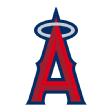 What’s good: The Angels were able to upgrade defensively in left field and second base. They acquired Cameron Maybin in a trade with the Tigers and signed Ben Revere in free agency, and both will be a huge improvement for left field. The acquisition of second baseman Danny Espinosa in a trade with the Nationals will give the Angels one of the best up-the-middle defenses in the game, with the game's best player, Mike Trout, in center field and one of the game's best defensive players, Andrelton Simmons, at shortstop.
What’s good: The Angels were able to upgrade defensively in left field and second base. They acquired Cameron Maybin in a trade with the Tigers and signed Ben Revere in free agency, and both will be a huge improvement for left field. The acquisition of second baseman Danny Espinosa in a trade with the Nationals will give the Angels one of the best up-the-middle defenses in the game, with the game's best player, Mike Trout, in center field and one of the game's best defensive players, Andrelton Simmons, at shortstop.
What’s bad: The Angels' pitching staff is flooded with pitchers either trying to come back from injuries or needing further development.
22. Tampa Bay Rays
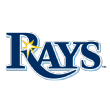 What’s good: The Rays have a top-tier starting rotation led by Chris Archer, Drew Smyly, Jake Odorizzi, Blake Snell and Alex Cobb. Evan Longoria is still performing at an elite level, and the team is loaded with young power bats, including Matt Duffy, Brad Miller, Steven Souza Jr. and Corey Dickerson. The Rays have the game's best defensive center fielder in Kevin Kiermaier, and their free-agent signing of Wilson Ramos should pay huge dividends once he recovers from his knee surgeries, which could be some time in the middle of summer.
What’s good: The Rays have a top-tier starting rotation led by Chris Archer, Drew Smyly, Jake Odorizzi, Blake Snell and Alex Cobb. Evan Longoria is still performing at an elite level, and the team is loaded with young power bats, including Matt Duffy, Brad Miller, Steven Souza Jr. and Corey Dickerson. The Rays have the game's best defensive center fielder in Kevin Kiermaier, and their free-agent signing of Wilson Ramos should pay huge dividends once he recovers from his knee surgeries, which could be some time in the middle of summer.
What’s bad: The team is no longer elite defensively at most positions, and the lineup lacks professional hitters with high on-base percentages who can hit the game's best pitchers.
23. Arizona Diamondbacks
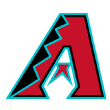 What’s good: The Diamondbacks have new leadership in GM Mike Hazen and manager Torey Lovullo. The D-backs will have a healthy A.J. Pollock back and will be strong in the middle of their lineup, led by one of the game's best all-around first baseman, Paul Goldschmidt. The Diamondbacks have strong positional depth with a lot of choices in the infield.
What’s good: The Diamondbacks have new leadership in GM Mike Hazen and manager Torey Lovullo. The D-backs will have a healthy A.J. Pollock back and will be strong in the middle of their lineup, led by one of the game's best all-around first baseman, Paul Goldschmidt. The Diamondbacks have strong positional depth with a lot of choices in the infield.
What’s bad: The D-backs need an everyday catcher after saying goodbye to Welington Castillo, whom they non-tendered. They also have to hope that, after Zack Greinke, the group of Patrick Corbin, Archie Bradley, Shelby Miller and Taijuan Walker can all have solid seasons, because that will be the key if Arizona is going to contend this year.
24. Chicago White Sox
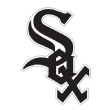 What’s good: The White Sox made two of the best rebuilding trades in baseball history when they garnered huge hauls from the Red Sox and Nationals in two separate deals. The first trade sent Chris Sale to Boston in exchange for Yoan Moncada, the game's best position prospect; Michael Kopech, whom many have compared to a young Noah Syndergaard; and Luis Alexander Basabe, who most think will be the long-term solution for the White Sox in center field. Basabe is a plus defender who has the potential to reach 25 stolen bases and 12-15 homers. In the second trade, outfielder Adam Eaton was sent to Washington, and the Chisox acquired three first-round caliber pitchers in Lucas Giolito, Reynaldo Lopez and Dane Dunning. What was once a five- to seven-year rebuilding plan is now down to three to five years, or maybe even less.
What’s good: The White Sox made two of the best rebuilding trades in baseball history when they garnered huge hauls from the Red Sox and Nationals in two separate deals. The first trade sent Chris Sale to Boston in exchange for Yoan Moncada, the game's best position prospect; Michael Kopech, whom many have compared to a young Noah Syndergaard; and Luis Alexander Basabe, who most think will be the long-term solution for the White Sox in center field. Basabe is a plus defender who has the potential to reach 25 stolen bases and 12-15 homers. In the second trade, outfielder Adam Eaton was sent to Washington, and the Chisox acquired three first-round caliber pitchers in Lucas Giolito, Reynaldo Lopez and Dane Dunning. What was once a five- to seven-year rebuilding plan is now down to three to five years, or maybe even less.
What’s bad: The White Sox's summer will be filled with the distractions of trade rumors involving other veteran players, including but not limited to Jose Quintana, Robertson, Todd Frazier, Melky Cabrera and maybe even Jose Abreu.
 What’s good: The Brewers have stayed steadfast in their rebuilding program. They have solid starting pitchers in Junior Guerra, Zach Davies, Jimmy Nelson and Wily Peralta, who will help keep them competitive as they wait for Josh Hader, Luis Ortiz, Brandon Woodruff and Phil Bickford, their best pitching prospects, to arrive.
What’s good: The Brewers have stayed steadfast in their rebuilding program. They have solid starting pitchers in Junior Guerra, Zach Davies, Jimmy Nelson and Wily Peralta, who will help keep them competitive as they wait for Josh Hader, Luis Ortiz, Brandon Woodruff and Phil Bickford, their best pitching prospects, to arrive.
What’s bad: They haven’t yet found the right trade or a strong enough return for a Ryan Braun deal, which would help their rebuilding program.
 What’s good: The Phillies have a strong long-term plan, and they have not deviated from it. They are showing great patience and discipline in their rebuild. The Phillies' trade for Clay Buchholz, re-signing of Jeremy Hellickson and free-agent pick-up of reliever Joaquin Benoit to short-term deals should put them in good position at the trade deadline to make more veterans-for-prospect trades. The Phillies have already put together a strong group of young pitchers, including Aaron Nola, Jered Eickhoff and Vince Velasquez.
What’s good: The Phillies have a strong long-term plan, and they have not deviated from it. They are showing great patience and discipline in their rebuild. The Phillies' trade for Clay Buchholz, re-signing of Jeremy Hellickson and free-agent pick-up of reliever Joaquin Benoit to short-term deals should put them in good position at the trade deadline to make more veterans-for-prospect trades. The Phillies have already put together a strong group of young pitchers, including Aaron Nola, Jered Eickhoff and Vince Velasquez.
What’s bad: The Phillies' position player prospects, including shortstop J.P. Crawford, catcher Jorge Alfaro and outfielder Nick Williams, do not yet appear to be ready for the major leagues, and the Phillies' lineup is still not ready to make them contenders.
27. Cincinnati Reds
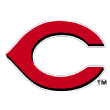 What’s good: Joey Votto is still one of the best hitters in baseball, Billy Hamilton is still the fastest player in the league and Brandon Phillips still throws Gold Glove-caliber leather all over second base.
What’s good: Joey Votto is still one of the best hitters in baseball, Billy Hamilton is still the fastest player in the league and Brandon Phillips still throws Gold Glove-caliber leather all over second base.
What’s bad: The Reds have been the most inactive team in baseball this offseason, which doesn’t bode well for a team trying to acquire better prospects or trade veterans who are blocking prospects. Homer Bailey and Devin Mesoraco are key players attempting to come back from injuries, and both need proven, veteran backups in case they can’t perform up to expectations.
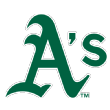 What’s good: Behind Sonny Gray, they have some young pitching to pay attention to in their rotation, including Sean Manaea and Kendall Graveman. Ryon Healy, who posted an .861 OPS in 2016, represents the front edge of a wave of infielders on the way who could ultimately give the A’s some interesting choices about who plays where.
What’s good: Behind Sonny Gray, they have some young pitching to pay attention to in their rotation, including Sean Manaea and Kendall Graveman. Ryon Healy, who posted an .861 OPS in 2016, represents the front edge of a wave of infielders on the way who could ultimately give the A’s some interesting choices about who plays where.
What’s bad: They don’t have a lot of win-now trade value to use to upgrade their talent at the deadline. Last year, nobody was biting on veteran relievers John Axford and Ryan Madson. If Gray doesn’t get turned around in the first three months, they don’t have much to make an impact move that will aid their rebuild.
29. San Diego Padres
 What’s good: The Padres have made some of the best high-ceiling trades for prospects in baseball over the past year, including landing starting pitcher Anderson Espinoza in the Drew Pomeranz trade, shortstop/third baseman Fernando Tatis Jr. in the James Shields trade, outfielder Manuel Margot in the Craig Kimbrel trade, and first baseman Josh Naylor in the Andrew Cashner trade.
What’s good: The Padres have made some of the best high-ceiling trades for prospects in baseball over the past year, including landing starting pitcher Anderson Espinoza in the Drew Pomeranz trade, shortstop/third baseman Fernando Tatis Jr. in the James Shields trade, outfielder Manuel Margot in the Craig Kimbrel trade, and first baseman Josh Naylor in the Andrew Cashner trade.
What’s bad: The Padres' rebuilding program will take longer than most because of their decision to trade for prospects who are the furthest away from the big leagues and the price they had to pay to get the high-end players; 2020 is the most realistic timetable for them. They also don’t have a competitive major league starting rotation, which will mean another 90-loss season and little to trade at this year’s trade deadline.
30. Minnesota Twins
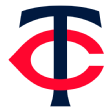 What’s good: The Twins have strong new leadership in the front office, led by Derek Falvey and GM Thad Levine. They still have a strong, young nucleus with great potential, led by young position players such as Miguel Sano, Byron Buxton and Nick Gordon.
What’s good: The Twins have strong new leadership in the front office, led by Derek Falvey and GM Thad Levine. They still have a strong, young nucleus with great potential, led by young position players such as Miguel Sano, Byron Buxton and Nick Gordon.
What’s bad: The Twins need an overhaul with their pitching at all levels. They haven’t been able to improve in that area with the players they have offered up, such as Brian Dozier and Ervin Santana, because they haven’t been given strong enough trade offers to date.
